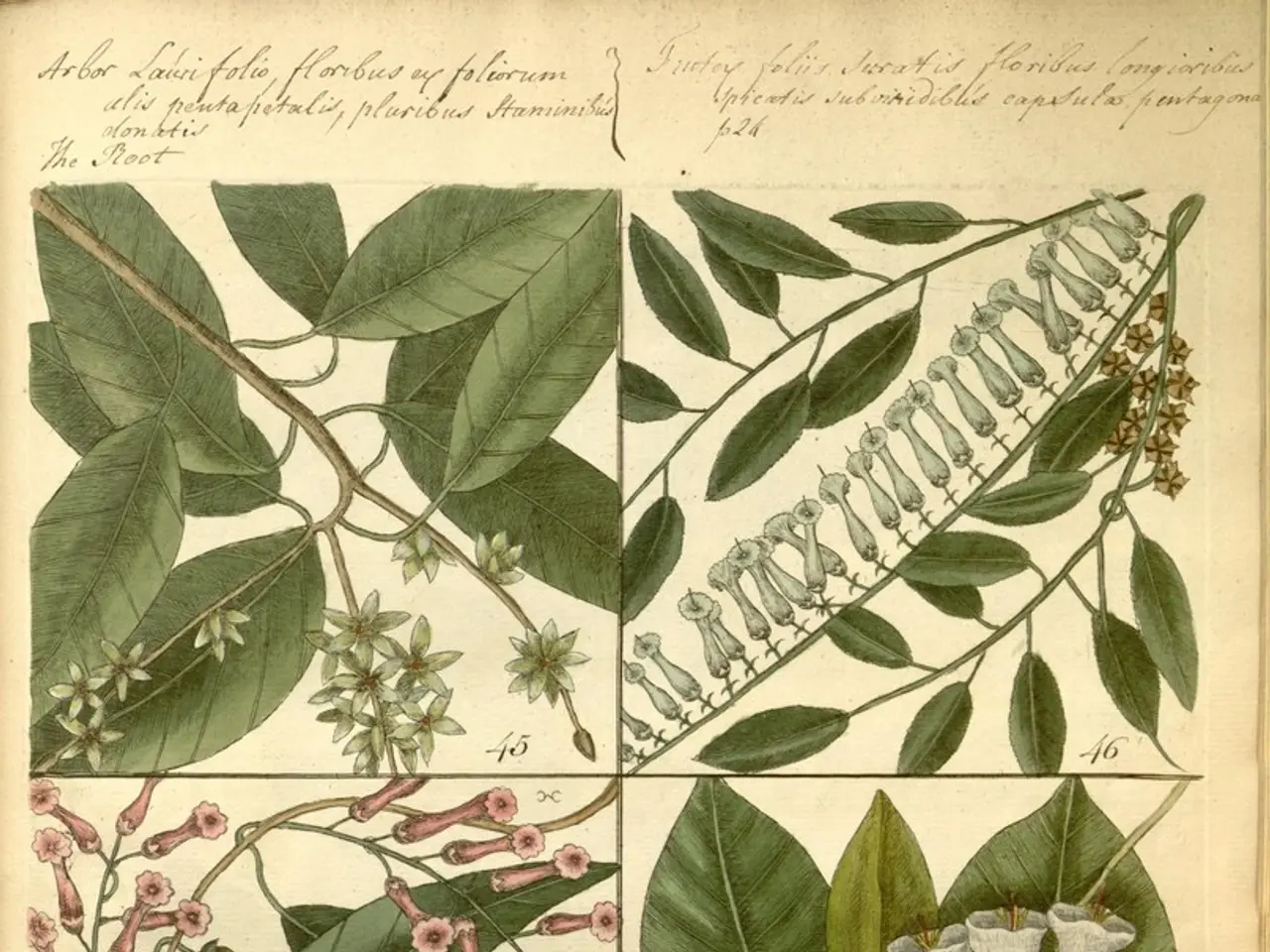Unveiled Advantages of Mingling Plants for Healthy Soil
In the world of gardening, the concept of companion planting is gaining popularity. This technique involves growing different plants together to help each other thrive, creating a more balanced, fertile, and resilient soil environment.
By implementing companion planting, gardeners can reduce the need for harmful chemicals and contribute to a healthier ecosystem. For instance, marigolds can ward off harmful nematodes when planted near vegetables, serving as natural pest deterrents.
Companion planting offers several benefits. It enhances nutrient availability, reduces soil compaction, and maintains living roots in the soil, thanks to various mechanisms. Some plants, like beans and peas, are nitrogen-fixing, converting atmospheric nitrogen into forms plants can use, enriching the soil with essential nutrients for nearby crops.
Combining plants with different root structures, such as taproots (carrots) and deep-rooted crops, helps reduce soil compaction, improves aeration, and enhances nutrient and water uptake. This practice keeps living roots in the soil more consistently, benefiting soil structure and microbial life, leading to improved overall soil health.
Moreover, companion planting can prevent soil erosion and nutrient runoff, protecting soil integrity. Flowers like yarrow attract beneficial insects that feed on harmful pests, while organic mulch is used to suppress weeds and retain moisture, keeping plants strong.
Crop rotation is another crucial aspect of companion planting. It helps prevent pest build-up by changing where crops are planted each year, reducing disease buildup and sustaining long-term soil health.
Adding compost to the soil enriches it, making it more resilient to pests and diseases. Sustainable practices, such as companion planting and composting, not only aid in pest control but also enhance the health of the garden.
Certain plants, like corn and beans, work well together. Corn provides support for the beans, while the beans fix nitrogen in the soil. Carrots and onions can repel carrot flies when planted together, and dill can attract beneficial insects when planted with cabbage. Beans and corn can provide support for climbing plants.
Radishes can create space for other roots when they grow quickly, breaking up compacted soil when planted alongside them. Carrots can also break up compacted soil, while beans help corn grow better by adding nitrogen to the soil.
By using companion plants, gardeners have reported a noticeable drop in pest problems, with these plants acting as natural bodyguards in the garden. In addition, companion plants promote healthier crops, enhance soil health, and increase biodiversity, creating a mini-ecosystem in the garden.
In conclusion, companion planting is a valuable tool for gardeners seeking to create a healthier, more sustainable, and pesticide-free garden. By embracing this technique, we can not only improve our gardens but also contribute to a healthier ecosystem.
- Embracing companion planting can lead to a reduction in harmful chemicals, as plants like marigolds act as natural pest deterrents, warding off harmful nematodes when planted near vegetables.
- Companion planting not only enhances nutrient availability and reduces soil compaction, but it also helps enrich the soil with essential nutrients, as nitrogen-fixing plants like beans and peas convert atmospheric nitrogen into forms plants can use.
- By implementing companion planting practices, gardeners can promote healthier crops, create a mini-ecosystem, and contribute to a more sustainable and pesticide-free lifestyle, both in their home-and-garden and the wider environment.




